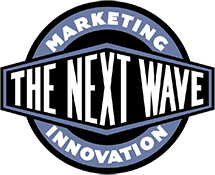We were invited to a pitch today. The potential client has grown quickly and out grown the agency they had. This is always an unfortunate situation, but, it’s always better to refocus early, before things get totally out of wack.
In a fast growth market, there are certain places a brand wants to be: first, biggest, most well known. Ideally, all three. The problem comes when you’re none of the above and searching for an added edge to continue your growth. This pitch was a bit different, in that we weren’t given much time (a week) and we weren’t given a brief, it was more of a capabilities presentation. Of course, the first question coming out of the audience (it’s a franchise organization so there were a lot of bodies in the room) was have you done work for someone like us before? The old catch 22 question which is why the old industry adage of “it’s better to be lucky than good” often comes to play in matching agencies to clients. Or, as they also say- it’s not what you know, but who you know.
In our background research we were finding that they are in a segment experiencing phenomenal growth. They’re on the map as a one to watch. The problem is, the number one player in their field, carved a niche away from the original number one by offering a very clear point of differentiation and then proceeded to own the niche like it’s the main event. The number two and three brands have been busy trying to out niche the leader and our potential client was trying to play leapfrog on the very same platform.
Stop.
This is what challenger brands should never do. Don’t play follow the leader. Don’t assume that what works for the leader can be copied, duplicated or improved- need proof, how’s Barnes and Noble really doing vs Amazon in just the eBook reader market? Never mind the selling of books. If you are going to be a challenger brand, the most important thing that you can discover to build a strong brand DNA is your brands “unique selling proposition,” a concept developed by Rosser Reeves for the Ted Bates Agency in the fifties. Brands that find their USP find that their products and services are much easier to sell and have a conversation with their customers because there is no cloud of confusion surrounding their products. Apple is a great example of a challenger brand that still isn’t the biggest by market share, but has grown from near bankruptcy to the most valuable company in the world based on the USP of products that are beautiful and easy to use. Google has grown by proving itself useful. Neither were first to market, but both found that by sticking to simple messaging they could own a position that could be unique to them. You’d think that other computer companies would figure out that ease of use is important, but it hasn’t happened yet.
While McDonalds and Burger King and sometimes Wendy’s, Hardee’s, Jack in the Box and countless others fought to be “THE” burger chain, Subway grew to have the most outlets by focusing on a more approachable business model with easier entry for franchisees. Five Guys is making all the burger joints look twice at trying to be something for everyone, as they stick to the knitting of making a better burger. When McDonalds began, there were no chicken nuggets, salads or coffee bars, it was burgers, fries and milkshakes.
If you want to be a challenger brand, that’s fine. But, the truly great understand that to steal a phrase from designer/author Marty Neumeier, in his book, “Zag“, “when others zig, zag.” He stresses the need for radical differentiation. It’s not just enough to talk about a strategy, you have to actually have one. Five Guys isn’t winning the burger wars because they have free peanuts, it’s because they hyper focused on a better burger and a simplified menu in a no-frills space.
Challenger brands that find their USP and convey it in a clear, differentiated voice, soon find themselves in a category all of their own. Find your USP, or find an agency that you can talk to about finding it, and you’ll be on your way to success.
